Legend. That’s not a title to be thrown around lightly. In our time, true legends are few and far between. Legends defy expectations; they reshape pop culture; they become immortal icons remembered forever, their stories passed down through time. And that’s exactly what we’re here for.
As you know, Park Lore exists to chronicle the stories of industry legends, from Test Track to Adventure Thru Inner Space; Maelstrom to JAWS; Snow White’s Scary Adventures to If You Had Wings. These are the stories that define eras of Imagineering. But even still, it’s rare for an Imagineering legend and a pop culture legend to collide… Today, our series heads to the stars for one of our most spectacular entries yet.
Captain EO was “here to change the world…” and he changed Disney World along with it. Michael Jackson’s biggest music video ever was unprecedented; an unimaginable collaboration of stars created specifically to reinvigorate Disney Parks when all hope seemed lost. In so doing, EO set the stage for a revolution, redefining Disney’s relationship with pop culture, film, and celebrity. Today, we’ll look behind-the-scenes of this industry-altering film and see exactly how – and why – it came to be.
And before we head off, remember that you can unlock rare concept art and audio streams in this story, access over 100 Extra Features, and recieve an annual Membership card and postcard art set in the mail by supporting this clickbait-free, in-depth, ad-free theme park storytelling site for as little as $2 / month! Become a Park Lore Member to join the story! Until then, let’s start at the beginning…
1980s
The lost legend of Captain EO begins in a desolate and dark place: Disneyland in the 1980s.
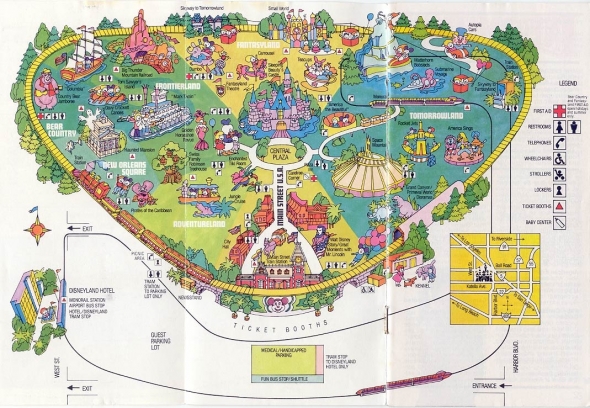
In the more-than-a-decade since Walt’s unexpected death in 1966, things at Disneyland (and all of Walt Disney Productions) were looking grim.
Throughout the 1970s and early ‘80s, Disney’s live action films were more busts than box-office gold, and the animation division had more or less flatlined. Disney’s theme parks, too, felt like relics from another era. Though unthinkable now, Disney was far from a global leader. It was a faded film studio whose future was uncertain. In fact, Disney endured a number of takeover attempts that would’ve likely seen the studios assets divided and its brand phased out, always holding on by the skin of its teeth.
More to the point, it wasn’t exactly clear how much longer – or even if – Walt Disney Productions could reasonably continue without Walt Disney.
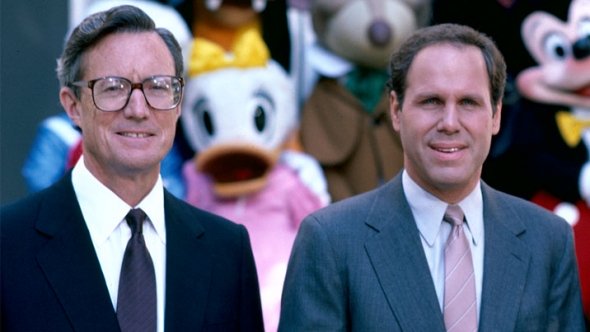
Finally, in 1984 – after an effort orchestrated by Board Member Roy E. Disney (Walt’s nephew) – the leadership at the time was ousted in favor of a hand-picked pair of outsiders. Frank Wells and Michael Eisner were brought in at Disney’s darkest hour with a simple goal: save Disney.
Thankfully, both men were well-suited for the challenge thanks to their respective histories at 20th Century Fox and Paramount Pictures, respectively, giving Disney the kinds of leaders who knew how to navigate the modern movie industry. Famously hands-on, Eisner knew exactly how to revive Disney’s studios (jumpstarting the Disney Renaissance and launching new live-action initiatives that turned the company around).
But Disney’s theme parks?
Turning tides
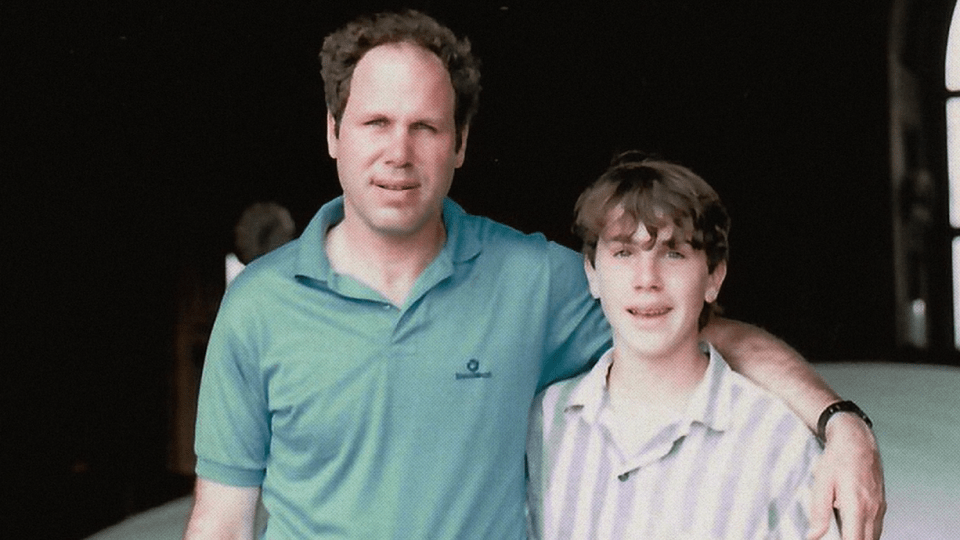
As the story goes, Eisner didn’t mind admitting that he wasn’t so sure how the theme park business worked. He learned quickly when – as part of his initiation with Disney – he asked his son Breck to join him for a tour of Disneyland. Breck allegedly scoffed at the offer, insisting Disneyland was for babies. Horrified, Eisner set out to do something – anything! – to make Disney Parks hip, cool, edgy places where teenagers wanted to be.
Michael brought Breck along for a tour of WED Enterprises’ Imagineering campus in Glendale, California, eager not only to hear how the process of populating Disney Parks worked, but to see what projects his preteen son gravitated toward as a litmus test for the pop culture relevance Disney Parks needed. It was Michael Eisner’s controversial opinion that Disney Parks could feature the kinds of characters, stories, and celebrities that mattered to modern audiences – even if they weren’t strictly Disney stories.
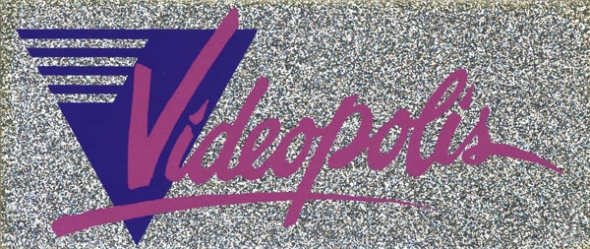
Right out the gate, Eisner greenlit Videopolis – a brand new entertainment venue built on the outskirts of Disneyland’s Fantasyland. Every evening, the theater was alight with the hottest top 40 hits and the cutting edge music videos of the era, broadcast across 70 video monitors.
Those who’d been to Walt Disney’s original Magic Kingdom at its opening three decades earlier likely would’ve been aghast at the flashing lights, pounding ’80s synths, and hoardes of teenagers that frequented the “club.” Once unthinkable, Videopolis went from concept to opening in just 100 days, and its June 22, 1985 opening proved that Disneyland could indeed be cool again.
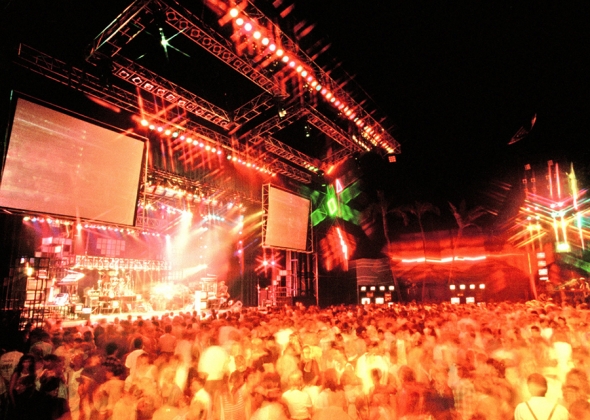
Even with the emergence of the MTV generation and a slew of videos from Starship, Mr. Mister, David Bowie, Madonna, and Wham!, the screens of Videopolis were dominated by one man… royalty – the King of Pop. Released December 2, 1983, the music video for Michael Jackon’s “Thriller” is today recognized as a watershed moment for the music industry, and often regarded as the most influential pop music video of all time.
The 14-minute epic literally changed pop culture, and was selected for preservation in the Library of Congress for being “culturally, historically, or aesthetically significant” – the first music video ever to be preserved. (Interestingly, the video was even released theatrically as a “short film” before a 1983 re-issue of Disney’s 1940 film Fantasia in order for it to technically qualify for an Academy Award nomination!)
Michael Jackson had cemented himself as the world’s leading pop culture figure; a singer, dancer, songwriter, and producer. And if his groundbreaking, earth-shaking videos could fuel Disneyland’s Videopolis, just imagine what a Michael Jackson attraction could do in turning Eisner’s dreams into a reality…
Stars Align
As luck would have it, Michael Jackson was an unrepentant lover of Disneyland. He visited often (both in and out of disguise) and often rented the park to visit in solitude after hours, and famously modeled his Santa Barbara estate, Neverland Ranch, after Disneyland. Imagine, then, how thrilled Jackson was when Eisner and company contacted him about the possibility of becoming involved with a brand new attraction for the park.
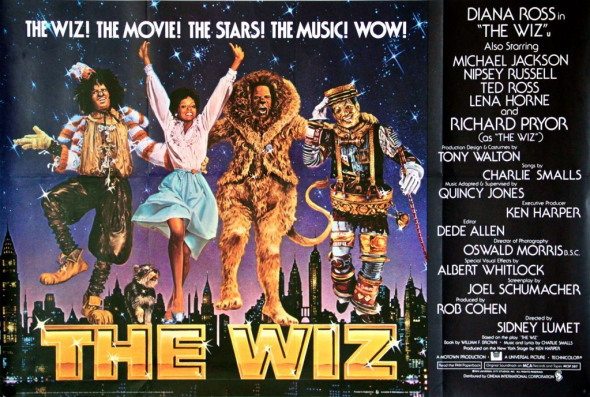
A few ideas were tossed around, but Michael in particular saw this opportunity as one to pursue a long-sought-after new career opportunity: film. While he’d played the Scarecrow in 1978’s The Wiz, Michael still hadn’t come into his own as an actor. Privately, he was already reporting that he was tired of making music videos and wanted a more serious career on the screen. For that reason, Disney and Michael agreed: they could leverage his starpower and music in a brand new, cutting-edge 3D film that would play exclusively at Disney’s theme parks.
He had only two requests: he wanted both George Lucas (of Star Wars fame) and Steven Spielberg (Jaws, Close Encounters of the Third Kind, and E.T.) behind the camera as producer and director, respectively. The two had collaborated on 1982’s Raiders of the Lost Ark (the start of the Indiana Jones series) and Michael believed them to be among the best filmmakers alive.
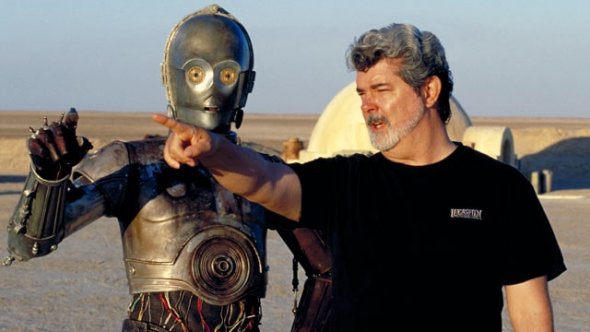
Though George Lucas’ attention was divided in the era (thanks to Indiana Jones, the emerging computer animation division that would become Pixar, and his new ILM special effects firm), he agreed to produce and hired on Rusty Lemorande (producer of Caddyshack and writer of 1984’s Electric Dreams) to handle the day-to-day on set. Lemorande is also the one who suggested that the new film feature not just 3D, but accompanying in-theater practical effects like fog and lasers. For that reason, Lemorande is sometimes called the Father of “4D.”
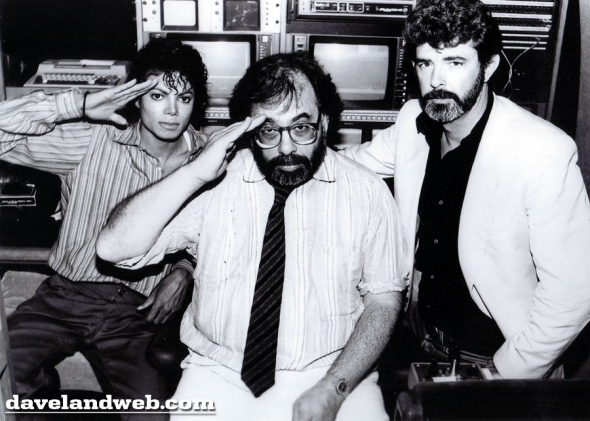
One star that did not align? Steven Spielberg. Despite Michael’s request, Spielberg was unavailable for the production (he was, by this time, working closely with Disney’s competitor, Universal Studios, on their plans for a ride based on Back to the Future set to anchor a new Orlando-based movie park…). Still, the new Disney Parks / Michael Jackson feature needed a director, and Lucas used the opportunity to bring on his friend and colleague, Francis Ford Coppola. A filmmaking legend in his own right, two consecutive years of box office busts left Coppola’s schedule empty. He gladly signed on, adding still more star-power to the billing.
Imagine the team: Michael Eisner (Disney’s new, film-industry focused CEO determined to do whatever it took to modernize Disney’s parks), Michael Jackson (the biggest star in the world coming off of his biggest release ever – “Thriller”), George Lucas (the unthinkable hit-maker piloting both Star Wars and the brand-new Indiana Jones), and Francis Ford Coppola (Academy Award winning director of The Godfather).
Now all they needed was a half-decent plot… Read on…


